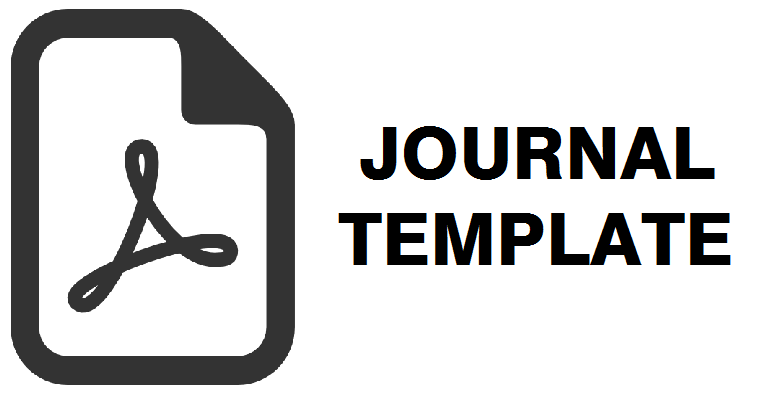Metode Pembelajaran Problem Based Learning dalam Meningkatkan Keterampilan Abad Ke- 21 Siswa SMPN 1 Kedungpring Lamongan
DOI:
https://doi.org/10.21154/asanka.v3i2.4946Keywords:
Problem Based Learning, Thinking Skills, 21st CenturyAbstract
ABSTRAK
Di abad 21 ini, banyak model pembelajaran yang dapat menjadi referensi guru untuk meningkatkan kreativitas maupun tanggungjawab siswa. Salah satu model pembelajaran yang dapat digunakan adalah problem-based learning dimana siswa dituntut untuk memecahkan masalah, bekerja sama dan bertanggungjawab sampai akhir pelajaran. Tujuan dari penelitian ini adalah untuk mengetahui efektifitas pembelajaran dengan menggunakan model problem-based learning untuk meningkatkan keterampilah abad ke-21 siswa di SMPN 1 Kedungpring, Lamongan. Jenis penelitian yang digunakan adalah metode kuantitatif deskriptif. Sedangkan untuk teknik pengumpulan data dalam penelitian ini menggunakan observasi, wawancara, kuesioner, dan dokumentasi. Hasil dari penelitian menunjukkan bahwa terjadi peningkatan signifikan prestasi belajar peserta didik kelas VIII C pada mata pelajaran PPKn dengan menggunakan model pembelajaran problem-based learning. Hal ini dibuktikan dengan sebanyak 80 % peserta didik berhasil lulus uji kompetensi. Kesimpulan dari penelitian ini adalah pembelajaran dengan menggunakan model pembelajaran problem-based learning mampu meningkatkan prestasi belajar para peserta didik.
ABSTRACT
There are many learning models available in the twenty-first century that teachers can use to increase creativity and student responsibility. Problem-based learning is one of the learning models that can be used in which students are required to solve problems, collaborate, and be responsible until the end of the lesson. This study aimed to determine the efficacy of learning by using a problem-based learning model to improve students' 21st-century skills at SMPN 1 Kedungpring, Lamongan. The descriptive quantitative method was used in the research. This study collected data through observation, interviews, questionnaires, and documentation. The study finding revealed a significant increase in the learning achievement of class VIII C students in Civics subjects when a problem-based learning model was used. It is demonstrated by the fact that up to 80% of students passed the competency test. This study concluded that learning using problem-based learning models could improve student achievement.
References
Argaw, A. S., Haile, B. B., Ayalew, B. T., & Kuma, S. G. (2017). The effect of problem based learning (PBL) instruction on students’ motivation and problem solving skills of physics. Eurasia Journal of Mathematics, Science and Technology Education, 13(3), 857”“871. https://doi.org/10.12973/eurasia.2017.00647a
Arikunto, S. (2013). Prosedur Penelitian Suatu Pendekatan Praktik. Rineka Cipta.
Dapa, A. N. (2018). Adaptive Learning Model for Children with Learning Problem on Inclusive School. https://doi.org/10.2991/indoeduc-18.2018.29
Direktorat Akademik, D. J. P. T. (2008). Buku Panduan Kurikulum Berbasis Kompetensi Pendidikan Tinggi. Direktorat Jenderal Pendidikan Tinggi.
Donnelly, R. (2010). Harmonizing technology with interaction in blended problem-based learning. Computers and Education, 54(2), 350”“359. https://doi.org/10.1016/j.compedu.2009.08.012
Frambach, J. M., Driessen, E. W., Chan, L. C., & Van der Vleuten, C. P. M. (2012). Rethinking the globalisation of problem-based learning: How culture challenges self-directed learning. Medical Education, 46(8), 738”“747. https://doi.org/10.1111/j.1365-2923.2012.04290.x
Kek, M. Y. C. A., & Huijser, H. (2011). The power of problem-based learning in developing critical thinking skills: Preparing students for tomorrow’s digital futures in today’s classrooms. Higher Education Research and Development, 30(3), 329”“341. https://doi.org/10.1080/07294360.2010.501074
Lou, S. J., Shih, R. C., Diez, C. R., & Tseng, K. H. (2011). The impact of problem-based learning strategies on STEM knowledge integration and attitudes: An exploratory study among female Taiwanese senior high school students. International Journal of Technology and Design Education, 21(2), 195”“215. https://doi.org/10.1007/s10798-010-9114-8
Mulyono, A. (2000). Penelitian Tindakan Kelas,. balai pustaka.
Putri, R. H., & Wardani, N. S. (2021). Peningkatan Hasil Belajar Tematik Melalui Problem Based Learning dalam Pembelajaran Daring Siswa Kelas IV SD. Mimbar Ilmu, 26(1). https://doi.org/10.23887/mi.v26i1.33195
Rotgans, J. I., & Schmidt, H. G. (n.d.). Cognitive engagement in the problem-based learning classroom. https://doi.org/10.1007/s10459-011-9272-9
Schmidt, H. G., Rotgans, J. I., & Yew, E. H. J. (2011). The process of problem-based learning: What works and why. Medical Education, 45(8), 792”“806. https://doi.org/10.1111/j.1365-2923.2011.04035.x
Susanto, S. (2020). Efektifitas Small Group Discussion Dengan Model Problem Based Learning Dalam Pembelajaran Di Masa Pandemi Covid-19. Jurnal Pendidikan Modern, 6(1). https://doi.org/10.37471/jpm.v6i1.125
Wijayanto, B., Sutriani, W., & Luthfi, F. (2020). Kemampuan Berfikir Spasial dalam Pembelajaran Abad 21. Jurnal Samudra Geografi, 3(2). https://doi.org/10.33059/jsg.v3i2.2495
Wirkala, C., & Kuhn, D. (2011). Problem-based learning in k-12 education: Is it effective and how does it achieve its effects? In American Educational Research Journal (Vol. 48, Issue 5). https://doi.org/10.3102/0002831211419491
Downloads
Published
Issue
Section
License
Authors who publish with this journal agree to the following terms:
- Authors retain copyright and grant the journal the right of first publication with the work simultaneously licensed under Creative Commons Attribution-NonCommercial 4.0 International License that allows others to share the work with an acknowledgment of the work's authorship and initial publication in this journal.
- Authors are able to enter into separate, additional contractual arrangements for the non-exclusive distribution of the journal's published version of the work (e.g., post it to an institutional repository or publish it in a book), with an acknowledgment of its initial publication in this journal.
- Authors are permitted and encouraged to post their work online (e.g., in institutional repositories or on their website) prior to and during the submission process, as it can lead to productive exchanges, as well as earlier and greater citation of published work (See The Effect of Open Access).





